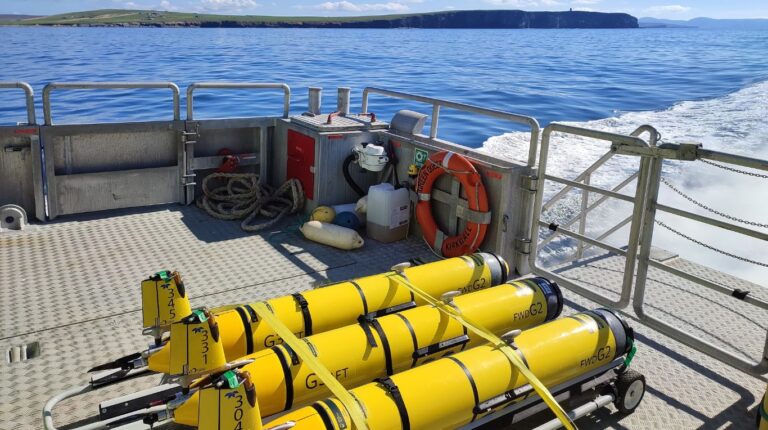Underwater gliders, operated by engineers from the UK’s National Oceanography Centre (NOC), will navigate through the North Sea taking measurements – such as salinity and temperature – for the Met Office in near real-time.
The project, which will operate for the next three years, aims to improve the collection and distribution of data from the North Sea. The new temperature and salinity data will be fed daily into Met Office forecast models and is part of a wider program to increase the amount of observational data for ingestion into models run on the new supercomputer. It will support the Met Office’s continuous work to improve forecast accuracy.
According to the partners, NOC’s specialist team of engineers has extensive experience in remotely operating gliders in challenging conditions and can provide the infrastructure for the Met Office to gather more accurate real-time ocean data.
Jim Trice, observations network manager at the Met Office, said, “Understanding the relationship between the atmosphere and the ocean is key to improving understanding of weather and climate. This data has given us greater insight into vital aspects that form the weather systems that affect us every day.”
Stephen Woodward, engineering manager at the NOC, said, “NOC excels in supplying innovative technology, which includes our state-of-the-art gliders, to institutions like the Met Office. The gliders we are providing are capable of operating independently for long periods of time, whilst their cutting-edge sensors excel at gathering crucial information about the state of our oceans.
“Securing a better understanding of ocean circulation and the data gathering potential of gliders is a key driving factor behind the project. It will be vital to inform future ocean modeling conditions and weather patterns. In time, this will support decision making in vital UK services, such as search and rescue, counter-pollution and ocean biodiversity.”
Dr Charlotte Williams, a physical oceanographer at NOC, concluded, “Over the next three years the NOC gliders will collect an unprecedented amount of data from the North Sea that will feed into Met Office forecasting simulations. This data will consist of what will be thousands of measurements of the temperature and salt content of the North Sea, important drivers in ocean-atmosphere interactions.”
For more top insights into automated ocean monitoring from NOC and the Met Office, read Meteorological Technology International’s exclusive feature, ‘What do new international regulations mean for automated ocean monitoring?’, here.



